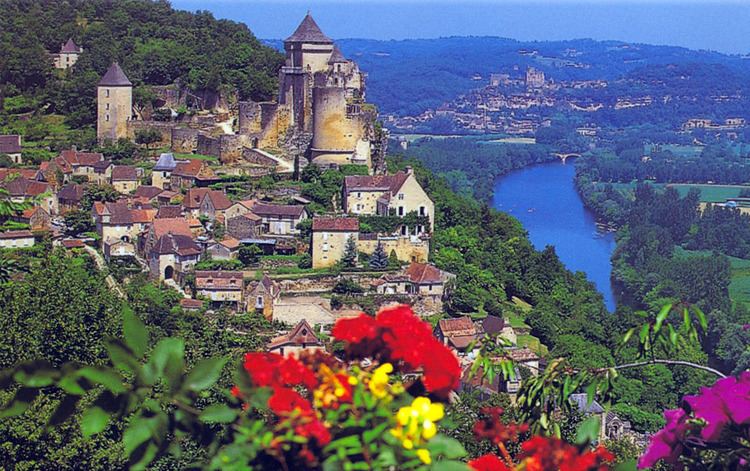Elevation 130 m (430 ft) | ||
 | ||
Destinations Sarlat‑la‑Canéda, Bergerac, Périgueux, Montignac, Brantôme Points of interest Château de Marqueyssac, Château de Castelnaud‑la‑Chapelle, Château de Beynac, Château des Milandes, Roque Saint‑Christophe | ||
Villes et villages gastronomie de dordogne et p rigord noir
The Périgord ( pronunciation ) (Occitan: Peiregòrd / Perigòrd) is a natural region and former province of France, which corresponds roughly to the current Dordogne département, now forming the northern part of the Aquitaine région. It is divided into four areas called the Périgord Noir (Black), the Périgord Blanc (White), the Périgord Vert (Green) and the Périgord Pourpre (Purple). The geography and natural resources of Périgord make it a beautiful, unspoiled region rich in history and wildlife, and the newly created Parc Naturel Régional Périgord-Limousin aims to conserve it as such.
Contents
- Villes et villages gastronomie de dordogne et p rigord noir
- Map of PC3A9rigord France
- Explore france carcasonne p rigord toulouse
- Geography
- History and prehistory
- References
Map of P%C3%A9rigord, France
Périgord is noted for its cuisine, especially its duck and goose products, such as confit de canard and foie gras. It is known as a centre for truffles in France. Périgourdine wines include Bergerac (red and white) and Monbazillac.
Explore france carcasonne p rigord toulouse
Geography
Périgord surrounds and is named after the préfecture (capital) of the Dordogne, Périgueux, and also includes Bergerac in the south and Sarlat in the east.
History and prehistory
There are Roman ruins in Périgueux which have been restored and the whole area is known as the 'cradle of mankind' due to its wealth of prehistoric sites, of which the most famous prehistoric site is the painted cave of Lascaux, whose depictions of aurochs, horses, deer and other animals (but not of humans) date back some 17,000 years.
The centre of pre-historic studies is the small town of les Eyzies, home to the newly rebuilt Museum of Pre-History, where 19th century archaeological investigations established the valley of the Vézère as an unusually rich array of pre-historic sites dating back some 40,000 years. One of UNESCO's World Heritage locations, the valley contains 147 prehistoric sites dating from the Palaeolithic era and 25 decorated caves.
Périgord was one of the main battlegrounds of Hundred Years' War between the French and English in the 14th and 15th centuries. It is also the land of medieval and Renaissance castles like Puymartin, Losse, Hautefort and Beynac situated mainly along the Dordogne and Vézère rivers. Other major castles include Jumilhac-le-Grand, Fénelon, Biron, Bourdeilles, Castelnaud, Puyguilhem and Rouffiac.
